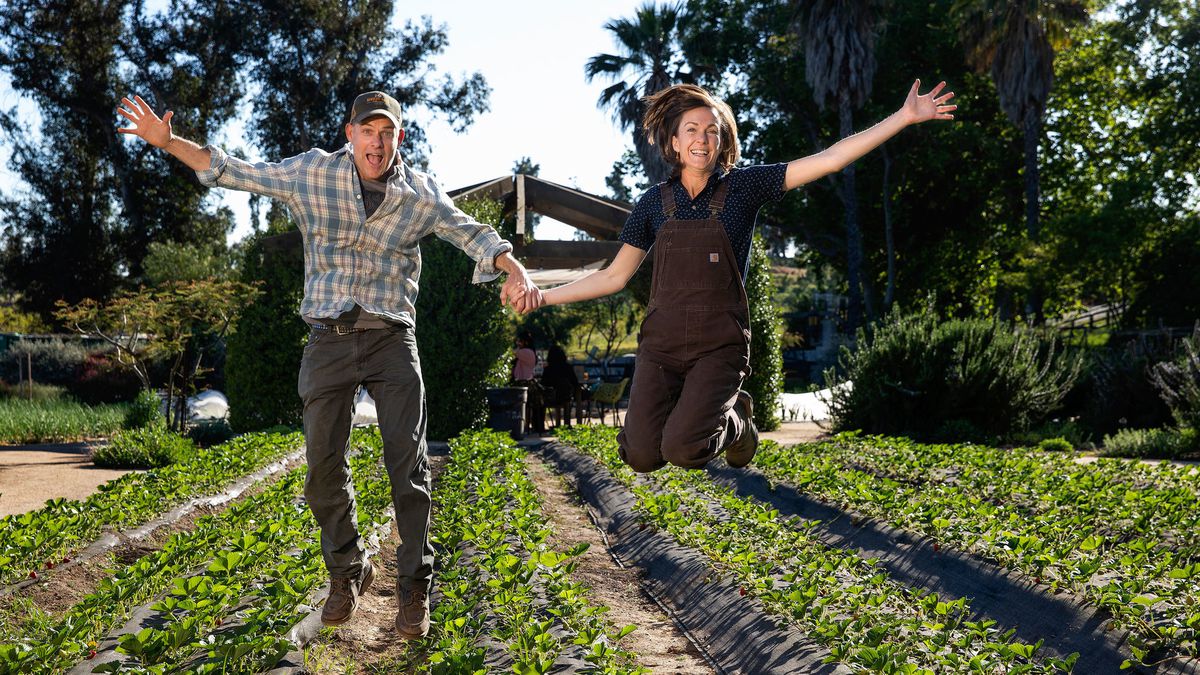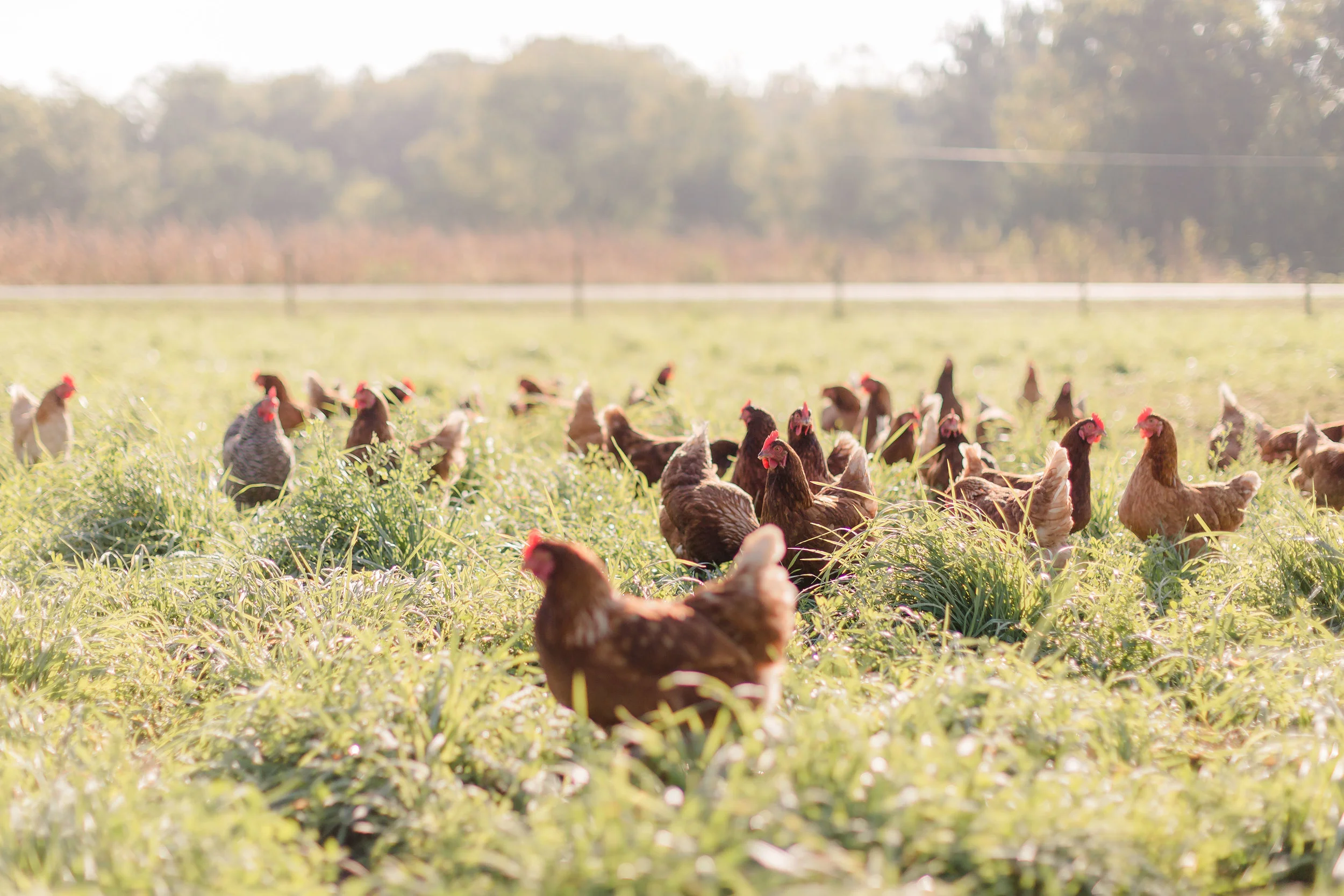Big love for a little farm
John and Molly Chester took a huge leap of faith when they left city life to start a farm in Ventura County, California. Photo Source
My husband looks at me from the other side of the couch and says, “I know exactly how he feels.” Thanks to a wildly enthusiastic recommendation from my parents, we’re watching John Chester in The Biggest Little Farm, a documentary about life on a small farm. In this scene, which takes place during the Chester’s first year of farming, John determines he has done all he can to help Emma, his pig, with her extreme case of mastitis following the birth of a huge litter. It was up to her now to survive, John says, as he sits beside her, defeated, in the dark of night, hoping she’ll turn a corner.
“We’re rooting for Emma the pig, too, which is the power of this movie.”
We’re rooting for her, too, which is the power of this movie. It personalizes chasing the wild dream of starting and running a small farm so effectively that audiences fall in love with John and his wife Molly, who ditched the city for a simpler life 10 years ago. Along the way, they learn how to farm, develop a local following, have a baby, and learn that “simpler” is anything but easy.
The Biggest Little Farm follows two dreamers when they make a choice to leave their tiny L.A. apartment and build a regenerative farm. To watch it, visit Amazon Prime or YouTube .
The Chesters convert a tired farm that grew only lemons and avocados into a vibrant, ecologically diverse producer of 10,000 fruit trees and crops, more than 200 varieties in all. They also bring in pigs, ducks, chickens, and other animals, and work to create a healthy ecosystem with a role for everyone.
“In this film, Nature is a stunning protagonist, and villain.”
The Chesters adopt regenerative farming, which relies on compost, cover crops, and mulch to feed and nourish the soil, which in turn grows healthier and more resilient plants. The vision they bring to their new venture is one of abundance and harmony with nature. What they discover instead is that nature has its own rhythm, which doesn’t always work for humans.
Brought to life by John’s skills as a cinematographer, Nature is a stunning protagonist, and the villain. It threatens to destroy everything the Chesters build, over and over again. When a fruit orchard finally begins producing ripe fruit, it’s swooped upon and devoured by flocks of hungry birds. After pasture-raised hens produce fresh eggs, the family’s first source of farm revenue, the chickens are quickly felled by coyotes. Throughout the roller coaster of wins and loss, death and life, the Chesters learn lessons in humility and the need to keep on going, and try again.
We’ve been there
My husband and I can relate. Living in rural Indiana, surrounded by farms, we started our own small kitchen garden in 2013. After doing a little research on how to grow vegetables, we learned that chickens can bring much needed nutrients to soil and aid in natural pest control, so we quickly added 12 egg laying hens. The following year we added more.
The next year we brought in pigs and cows and scaled produce production with the goal of converting 40 acres of land, once dedicated to growing only a couple of crops, into a biologically diverse, thriving pasture. Like the Chesters we ride the highs and lows of farm life, from jolting awake in the night to the sounds of coyotes to admiring the return of hundreds of native birds, butterflies and so many bunnies to our property. We, too, have learned lessons on life and death and on not giving up, even when it gets hard, or dark.
The hens roaming the pasture at our farm, Bent Arrow Acres, in Indiana.
This is the story of farming and The Biggest Little Farm follows that arc. It’s the same narrative found in any great story, that is, in spite of many hardships, our heroes persevere and succeed. Apricot Lane Farm eventually becomes a beautiful place of abundance. Even Emma makes a full recovery, and gets a boyfriend to boot.
“I can think of dozens of small farmers who would be more than happy to share that there is more hardship involved in maintaining a farm than just battling nature. ”
There is much to like about this storyline, especially for the Indiana farmers watching the film. But my husband and I were also left with plenty of questions, namely, how did the Chesters pull off the cost of running such a big, beautiful farm?
At the film’s outset there’s a brief mention of some outside investment. By our accounts that investment must have been significant to buy the land and cultivate the crops and build the facilities on Apricot Lane Farms. Curiosity got the better of me and I searched online in Ventura County to find something of comparable value. My efforts turned up a dilapidated farm of similar acreage (around 250) for sale for just under 5 million dollars. This was just the land, barns, and the home. The price did not include a state of the art compost facility, animals, plants, labor and more.
The failure to mention the farm’s success as due to anything but the fruits of hard labor made it a little harder for me (and my husband) to love the film. I can think of dozens of farmers bootstrapping a farm just like Apricot Lane Farms who would be more than happy to share that there is more hardship and heartache involved in maintaining a farm than battling nature. There’s also battling recession, market swings, and reluctant investors.
Apricot Lane Farms is pretty, the people seem wonderful, the animals are appealing, and the film makes a compelling case for the sustainability of regenerative farming practices. But, at the end of the day, farming is a business and the film never squarely addresses whether, after all those years of hard work, the farm is turning a profit.
But, perhaps that wasn’t the intent behind making it. If all they wanted to do was to share the complexity and beauty and hope found in farming, they succeeded. As a farmer, I can’t complain about that. To have another farmer create a way for consumers to think a little differently about the food system and the power of regenerative agriculture and put it in a really pretty package? This movie is at least a big, little start.










